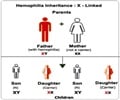Cotton aerogels harvested from textile waste can be fabricated within 8 hours that has wide range of applications in hemorrhage control and heat insulation.

TOP INSIGHT
Aerogels made from cotton waste are simple, cost-effective, biocompatible and more effective than cellulose-based sponges for treatment of deep hemorrhagic wounds.
Led by Associate Professor Hai Minh Duong and Professor Nhan Phan-Thien from the Department of Mechanical Engineering at NUS Faculty of Engineering, the research team discovered that the novel cotton aerogels can be easily compressed, and they can also very quickly recover up to 97 per cent of their original size when placed in water.
"This new eco-friendly cotton aerogel is a major improvement from the aerogel that our team had previously developed using paper waste. It is highly compressible, hence storage and transportation costs could be greatly reduced. Furthermore, these cotton aerogels can be fabricated within eight hours - this is nine times faster than our earlier invention and about 20 times faster than current commercial fabrication processes. They are also stronger, making them more suitable for mass production. While we have demonstrated novel application of the cotton aerogels for effective hemorrhage control and heat insulation, we will continue to explore new functions for this advanced material," said Assoc Prof Duong.
Effective control of rapid bleeding
Hemorrhage or the excessive and rapid loss of blood, caused by gunshot wounds or other deeply penetrating wounds can often be life-threatening. Hemorrhage control devices are used to exert internal pressure to stop bleeding and promote blood clotting.
To address these limitations, NUS scientists developed highly compressible hybrid cotton aerogel pellets which are more effective than cellulose-based sponges for treatment of deep hemorrhagic wounds. These pellets - comprising an optimal mix of cotton and cellulose aerogels coated with chitosan - are simple and cost-effective to produce, and they can be easily integrated into a clinical syringe to be used as a hemorrhage control device. The cotton aerogel pellets are also biocompatible, hence they can be safely administered for treatment.
The findings for this novel application are published in the scientific journal Colloids and Surfaces A: Physicochemical and Engineering Aspects in January 2018.
Heat insulation
Soldiers regularly embark on vigorous physical activities in hot and humid conditions. The military canteen is an essential item in a soldier's survival kit, carrying fluid for rehydration and mitigation of heat injuries. A military canteen can typically hold one liter of water and maintain its cool temperature for about 30 minutes in our tropical climate.
The NUS research team, in collaboration with DSO National Laboratories, developed a light-weight thermal jacket to maintain the temperature of ice slurry - crushed ice and liquid water - at 0.1 to 1.0 degree Celsius for more than four hours. The thermal jacket, which weighs about 200 grams, consists of a cotton aerogel layer embedded within commonly used fabrics to provide heat insulation.
The cotton aerogel-insulated military canteen offers better heat insulation performance compared to commercial insulated water bottles such as FLOE bottles, and is highly comparable to that of vacuum flasks. However, FLOE bottles and vacuum flasks are much heavier and more costly.
"The heat insulation property of the novel cotton aerogels can be applied to various consumer products, such as cooler bags to keep food items fresh. We also foresee tremendous potential for other high value applications, such as pipeline insulation and transportation of liquefied natural gas which needs to be stored at a low temperature," said Prof Nhan.
The NUS team has filed a patent for the novel cotton aerogels and is exploring opportunities to work with companies to commercialize the technology.
Source-Eurekalert
 MEDINDIA
MEDINDIA




 Email
Email






